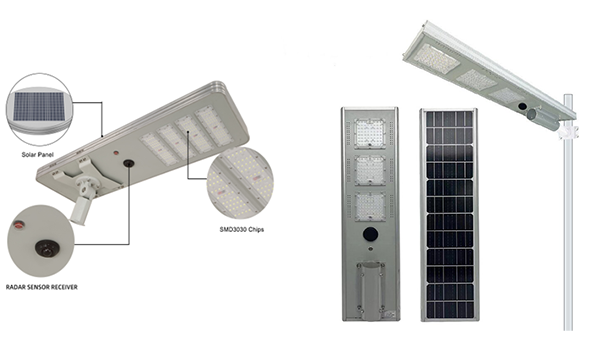Do you know how choose solar street light for your project
As purchaser , do you know how choose solar street light for your project ?
With the rapid development of new energy sources, solar street lights are becoming increasingly popular in households and engineering projects due to their energy efficiency, environmental friendliness, flexible installation, and ease of maintenance compared to grid-connected street lights. The two main forms of solar street lights are: split-type and all-in-one street lights.
So, how should we choose the suitable product for our project?
Split-type solar street light

split-type solar street light is a form of solar lighting system where the key components are separated and installed individually. Unlike all-in-one or integrated solar street lights where the
solar panel, battery, light source, and controller are housed in a single unit, in a split-type system, these components are distinct and can be installed in different locations.
Components of Split-Type Solar Street Light:
Solar Panel: Installed typically on a pole or a nearby structure, it captures sunlight and converts it into electrical energy.
Light Fixture: Equipped with LEDs, this is often mounted on a pole.
Battery: Stores the solar energy, usually installed at the base of the pole or underground.
Charge Controller: Regulates the charging of the battery to prevent overcharging or over-discharging.
Pole: Supports the light fixture and sometimes the solar panel.
Advantages:
Flexibility in Installation: Since the components are separate, the solar panel can be placed in the most sunlight-exposed area, while the light can be located where it's needed most.
Higher Capacity: They can support larger solar panels and batteries, making them suitable for higher wattage requirements and longer backup time.
Ease of Maintenance: Each component can be individually maintained, repaired, or replaced without affecting the other parts.
Better Performance in Shaded Areas: The solar panel can be placed at a distance from the light fixture, which is advantageous in areas where the light fixture might be in a shaded location.
Disadvantages:
Higher Installation Cost: Split-type systems may have higher installation costs due to additional wiring and mounting requirements for separate components.
Complex Installation: Installation is more complex and time-consuming compared to integrated systems.
Aesthetic Concerns: With more visible components, split-type solar street lights may not be as sleek or aesthetically pleasing as integrated ones.
Risk of Theft or Vandalism: Separate components may be more prone to theft or vandalism, especially in remote or unsecured areas.
Overall, split-type solar street lights offer flexibility and higher capacity, making them suitable for a variety of applications, but they come with increased complexity and potential costs.
Their suitability often depends on the specific requirements and conditions of the installation site.
All-in-one solar street light

All-in-one solar street light is a compact and integrated system that combines all the major components of a solar street light into a single unit. This type of solar street light typically
includes a solar panel, LED light source, rechargeable battery, and a charge controller, all housed together in a single fixture.
Advantages :
Easy to Install: Since all components are integrated into one compact unit, installation is straightforward and fast, often requiring just mounting the unit on a pole.
Reduced Maintenance: With fewer external components, all-in-one solar street lights typically require less maintenance compared to split-type systems.
Space-Saving and Aesthetic Design: These lights are sleek and modern, taking up less space and often blending in better with the surroundings.
No Wiring Required: The absence of external wires reduces the risk of accidents and makes these systems less vulnerable to theft and vandalism.
Improved Energy Efficiency: Integrated design can often lead to more efficient power management and usage, with smart features like motion sensors to optimize battery life.
Disadvantages:
Limited Scalability: The size of the solar panel and battery is confined to the size of the light fixture, which may limit the system's overall capacity and efficiency.
Less Flexibility in Positioning: Since the solar panel needs to be oriented towards the sun, there may be limitations in where the light can be installed, especially in shaded areas.
Heat Dissipation Issues: All components being in one unit can lead to heat accumulation, which may affect the lifespan and performance of the system, especially in hot climates.
Potentially Higher Replacement Costs: If one component fails, the entire unit might need to be replaced, which could be more costly compared to replacing a single component in a split-
type system.
Limited Customization: The integrated nature of these lights often means less flexibility in terms of changing or upgrading individual components.
Operational Limitations: Due to its design, an integrated solar street light has a relatively small battery. To extend its usage time, it operates based on motion detection, turning off when no one is around and turning on when someone passes by. This can result in an illumination area that fluctuates between bright and dim.
All-in-one solar street lights are popular for their ease of installation and sleek design, making them ideal for residential areas, parks, and home lighting .
However, for large-scale or industrial applications, such as government project and city construction where higher power and more robust systems are needed, split-type solar street lights might be more suitable.








